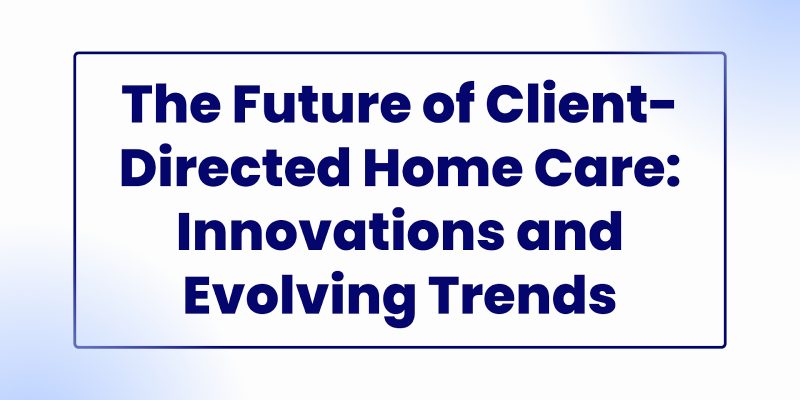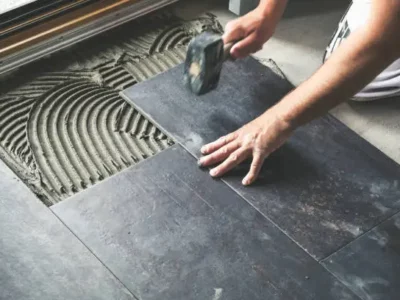In the ever-evolving field of healthcare, client-directed home care has emerged as a beacon of hope for individuals seeking personalized care. While the existing benefits of client-directed home care continue to satisfy people, the future possibilities are even more exciting.
Technological innovations are bringing advanced care into patients’ homes. The economic landscape is evolving to meet the rising demand for in-home services. At the heart of these changes is a push toward more patient-centric care.
In this article, let us explore the possible innovations and evolving trends in the future of client-directed home care. Before diving deep, let us cover some basics first.
What Is Client Directed Home Care?
Client-directed home care represents an innovative approach to healthcare that empowers the client to take control over their healthcare decisions. This model of care holds the significance of personalized care plans carefully tailored to fit the unique needs of the client.
The major attribute that differentiates client-directed home care from traditional care is that they own greater autonomy and power over the care they receive in the comfort of their home.
It elevates the overall health of the individual by providing them the freedom to choose the kind of care they desire to receive. Caregivers are increasingly opting to work directly for clients rather than agencies through client-directed home care program.
The Increasing Popularity of Client-Directed Home Care
Driven by patient empowerment and individualized care, the popularity of client-directed home care is steadily increasing. The significant rise in popularity is clearly evident in the statistics and trends. The answer to the question of why client-directed home care is gaining popularity is undoubtedly the benefits. It is proven to improve health outcomes, reduce healthcare costs, and increase satisfaction levels.
The Shift in Caregiver Dynamics
In recent years, there has been a trend of caregivers leaving agencies to work directly for clients. Client-directed home care has gone through a profound shift in the caregiver dynamics through reinventing the roles and relationships with their clients. This provides several benefits for both caregivers and clients:
The notable aspect that draws a line between traditional home care and client-directed home care is the role of authority. In the traditional home care models the caregivers are given authority and are made to make decisions based on the little input by the client. However, in client-directed home care, there’s a drastic role shift through which the client is placed in the seat of authority.
Simply put, the caregivers are no longer mere decision makers, instead, they take up the role of partners and collaborate with the client in crafting their personalized care.
Technological Advancements in Home Care
Technology is driving major innovations in home health care:
- Through Telehealth, patients can have access to medical consultations and monitoring from home via phone and video chat. Vital signs and drastic health state changes are remotely monitored from the comfort of home. This cut down unnecessary hospital costs and ER visits.
- Remote patient monitoring uses in-home devices to track vitals and symptoms between visits. Real-time data and alerts such as blood glucose levels and blood pressure are shared with the healthcare team and client.
- Mobile apps and wearables enable seniors to share health data and connect with caregivers digitally. This includes a fitness tracker and smartwatches for regular health monitoring.
- Home security is ensured by tracking moving and detecting falls through Internet-enabled sensors(IoT). You also have the power to change the environment settings based on the client’s preferences.
These technologies have mammoth potential to enhance care while keeping patients out of facilities and in the comfort of homes. Tech will be essential in enabling the health care system to shift more care delivery to the home setting.
The Economic Impact on Home Health Care
The economic growth and impact on home health care is widespread and multifaceted. The demand for home-based care is evidently growing not only financially but also in healthcare spending, employment, and the overall economy.
The home care sector is positioned for massive growth in the coming years: Up to $265 billion worth of care services could shift from hospitals and facilities into homes by 2025.
Key factors driving this growth include:
- Aging population: More seniors require ongoing care and prefer to age in place at home.
- Rising chronic conditions: Growing rates of chronic illnesses like diabetes and heart disease increase demand for home health services.
- Shifts in Medicare: More Medicare Advantage plans cover in-home care. Medicare fee-for-service is also starting to reimburse for more home health services.
- Preference for home-based care: Both seniors and their family caregivers increasingly favor receiving care at home.
As demand escalates, payers are economically incentivized to enable in-home care rather than more costly facility-based services.
Patient-Centric Care: The New Frontier
Today’s care delivery landscape is becoming more patient-centric:
- Care is shifting into patients’ homes via virtual care, home health agencies, and live-in caregivers.
- Retail health clinics and ambulatory centers make care more conveniently accessible.
- Value-based care models like accountable care organizations (ACOs) reward providers based on patient outcomes and satisfaction.
- Shared decision-making between patients, families, and physicians is becoming standard practice.
- Health systems are investing in patient experience officers and programs to provide coordinated, personalized care.
This patient-first approach recognizes that quality care means care tailored to individuals’ unique needs, values, and lifestyles.
The AI Revolution in Home Care
Artificial intelligence is revolutionizing in almost all fields, and healthcare is no stranger to that.
Here are some points that support the statement.
- AI algorithms can analyze data to predict health risks before they occur and allow for proactive management and preventive care. They also assist in analyzing real-time data from wearables and other home-based devices. It includes data like daily activities, health parameters, and tracking of the patient’s vital signs.
- The caregivers who provide home care will have to deal with protecting patients’ privacy and data security. With AI-powered systems, it is a piece of cake as they adhere to strict health care regulations and encryption protocols.
- The AI-driven chatbots facilitate remote consultation and quick access to health care in the comfort of their home. It ensures accurate and faster assessment of medical conditions through AI-powered image analysis and remote diagnostic capabilities.
- Additionally, they also have the ability to assist the client in medical management by reducing the risk of human errors and promoting medical adherence.
While the possibilities of AI-powered health systems are exciting, healthcare professionals must be mindful of the potential risks they might bring. The risk may include biases in algorithmic decision-making. As it is AI-generated, thoughtful oversight and testing will be critical while further integrated into care.
Key Takeaways
Considering the evolving trends and transformative innovations in the healthcare field, the future of client-directed home care seems promising. With the integration of technology and collaborative measures taken by caregivers, client-directed care programs are on the road to success. With the future in sight, client-directed home care, paints a new hope for health care, empowering clients to be the deciding force of their own well-being.





















